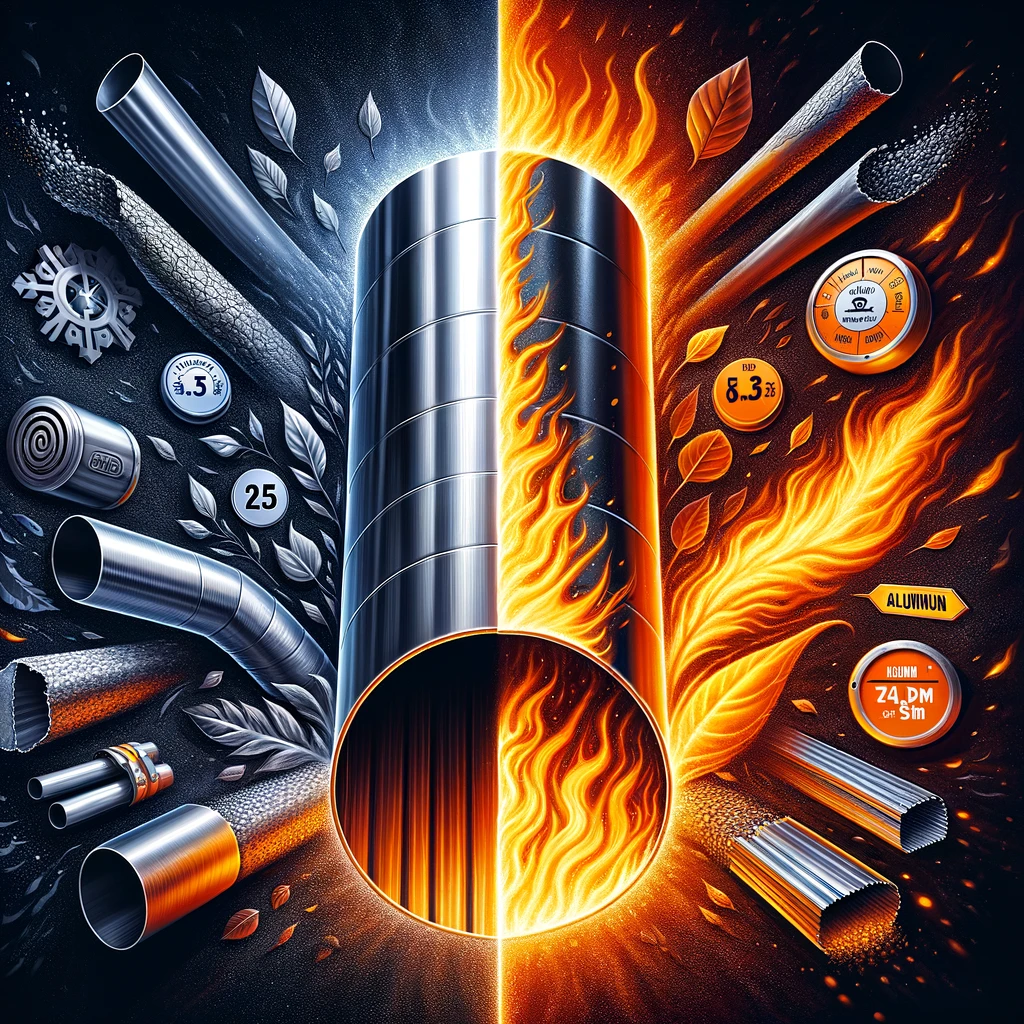
When it comes to choosing a chimney liner, the materials you consider will significantly impact the functionality, safety, and longevity of your chimney. Two popular materials for chimney liners are stainless steel and aluminum. Each has its advantages and drawbacks, which we will explore to help you make an informed decision.
Material Characteristics
Aluminum Chimney Liners are lightweight and less expensive than their stainless steel counterparts. They are suitable for gas appliances that do not produce high temperatures or corrosive exhaust. However, aluminum liners cannot withstand the higher temperatures generated by wood or coal burning and are more susceptible to damage from these heat sources.
Stainless Steel Chimney Liners, on the other hand, are known for their durability and resistance to high temperatures and corrosive materials. They are compatible with all types of fuels, including wood, gas, oil, and coal. Stainless steel liners are designed to last for many years, making them a long-term investment for your chimney.
Installation and Maintenance
The installation of aluminum chimney liners is generally straightforward and less costly, primarily due to the material’s light weight and flexibility. However, aluminum liners may require more frequent replacements over time, especially if used with fuel types for which they are not recommended.
Stainless steel chimney liners require a more significant initial investment in both materials and installation. Still, their robust construction means less frequent replacements and potentially lower maintenance costs over the liner’s lifetime. Stainless steel liners also offer better protection for your chimney’s structure against heat and corrosion.
Performance and Safety
Performance-wise, stainless steel liners provide a superior seal and insulation, improving your heating appliance’s efficiency. This can lead to better draft, reduced creosote buildup, and a lower risk of chimney fires.
While aluminum liners can be effective for specific low-heat applications, they do not offer the same level of protection and efficiency enhancements as stainless steel liners. The risk of damage under high heat can also pose safety concerns, making them less ideal for fireplaces and wood-burning stoves.
Cost Considerations
In terms of upfront costs, aluminum liners are undoubtedly more affordable than stainless steel liners. However, considering the potential need for more frequent replacements and the limitations on fuel types, the long-term costs could be higher for aluminum liners.
Stainless steel liners, while more expensive initially, tend to be more cost-effective over time. Their durability and compatibility with all fuel types mean you won’t need to replace the liner as often, providing better value in the long run.
Why Choose Stainless Steel?
Choosing a stainless steel chimney liner offers numerous advantages. Its superior durability and resistance to high temperatures make it a safer and more reliable choice for all types of fireplaces and stoves. The long-term savings on maintenance and replacements, coupled with improved appliance efficiency and safety, make stainless steel an investment in your home’s value and your family’s well-being.
In conclusion, while aluminum chimney liners may be suitable for specific, low-heat applications, the overall benefits of stainless steel liners make them the preferable choice for most homeowners. Investing in a stainless steel chimney liner means investing in the safety, efficiency, and longevity of your home heating system.
